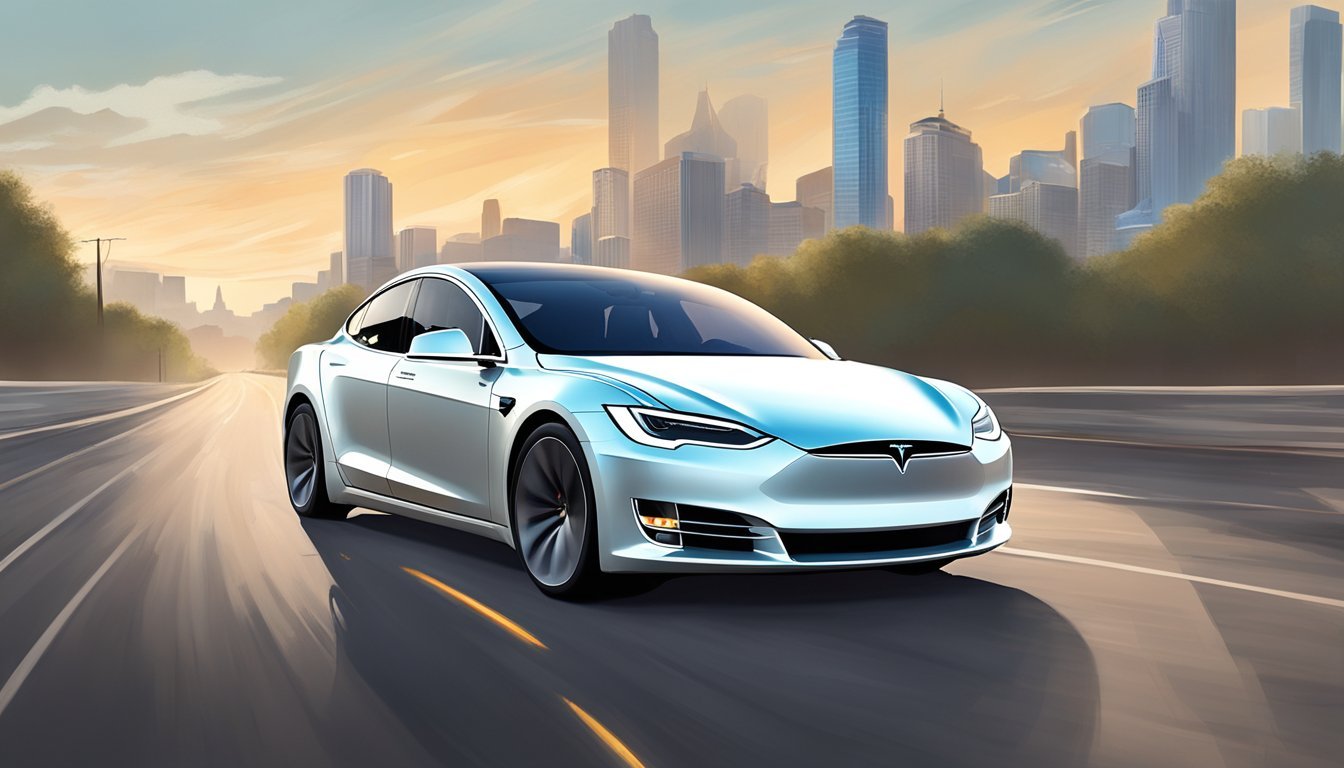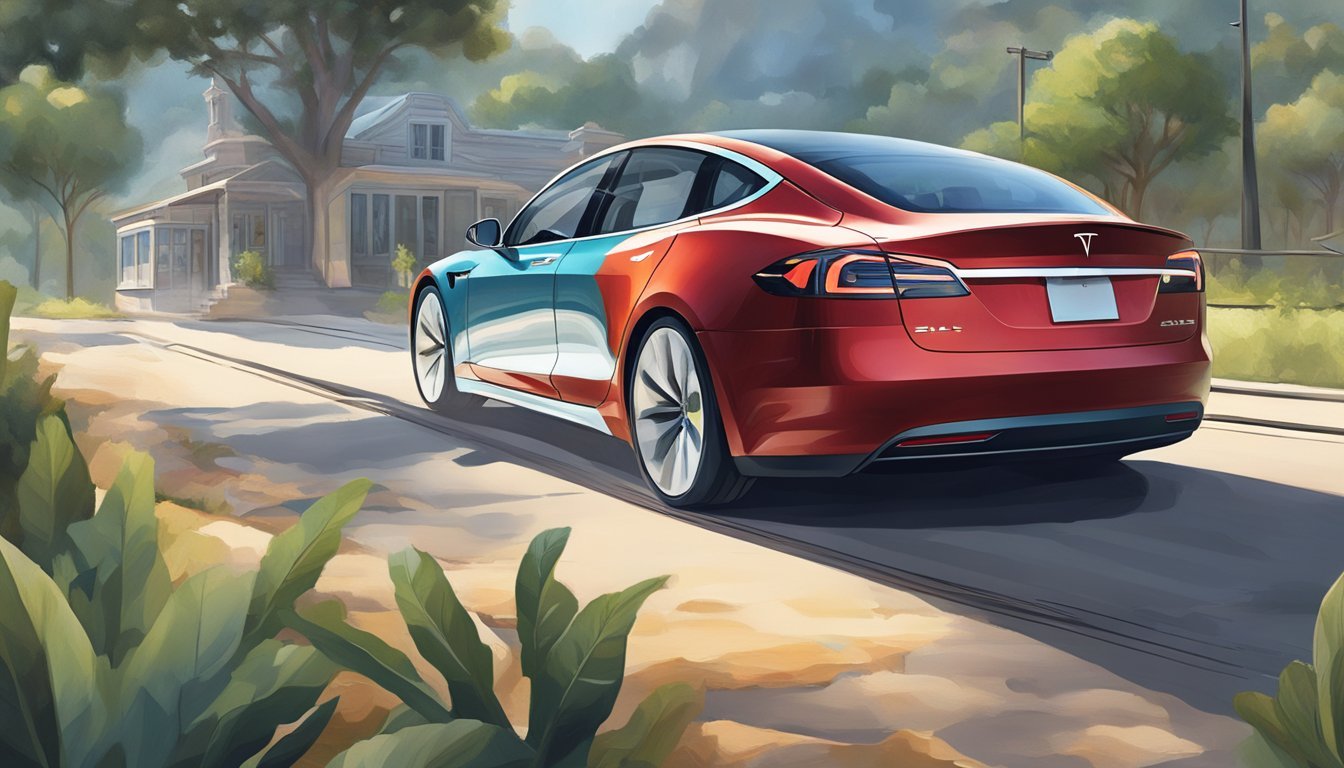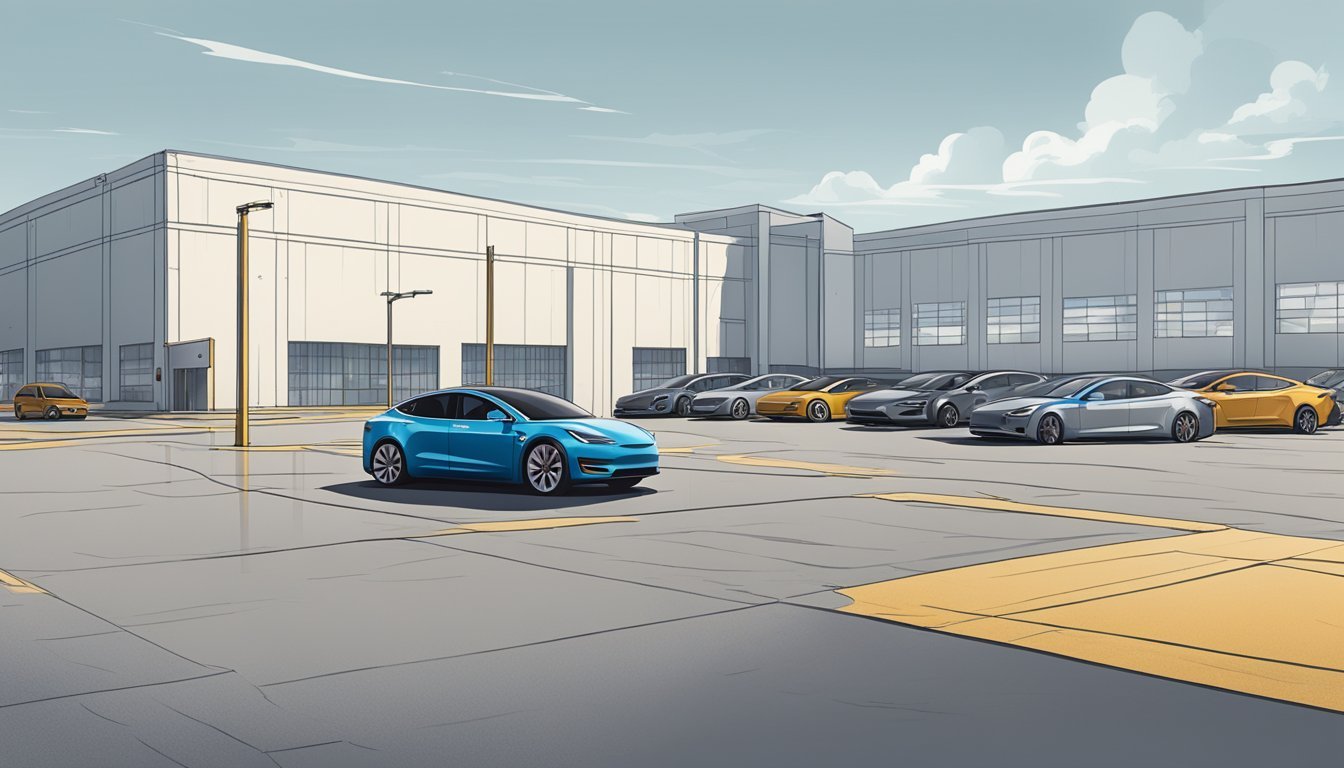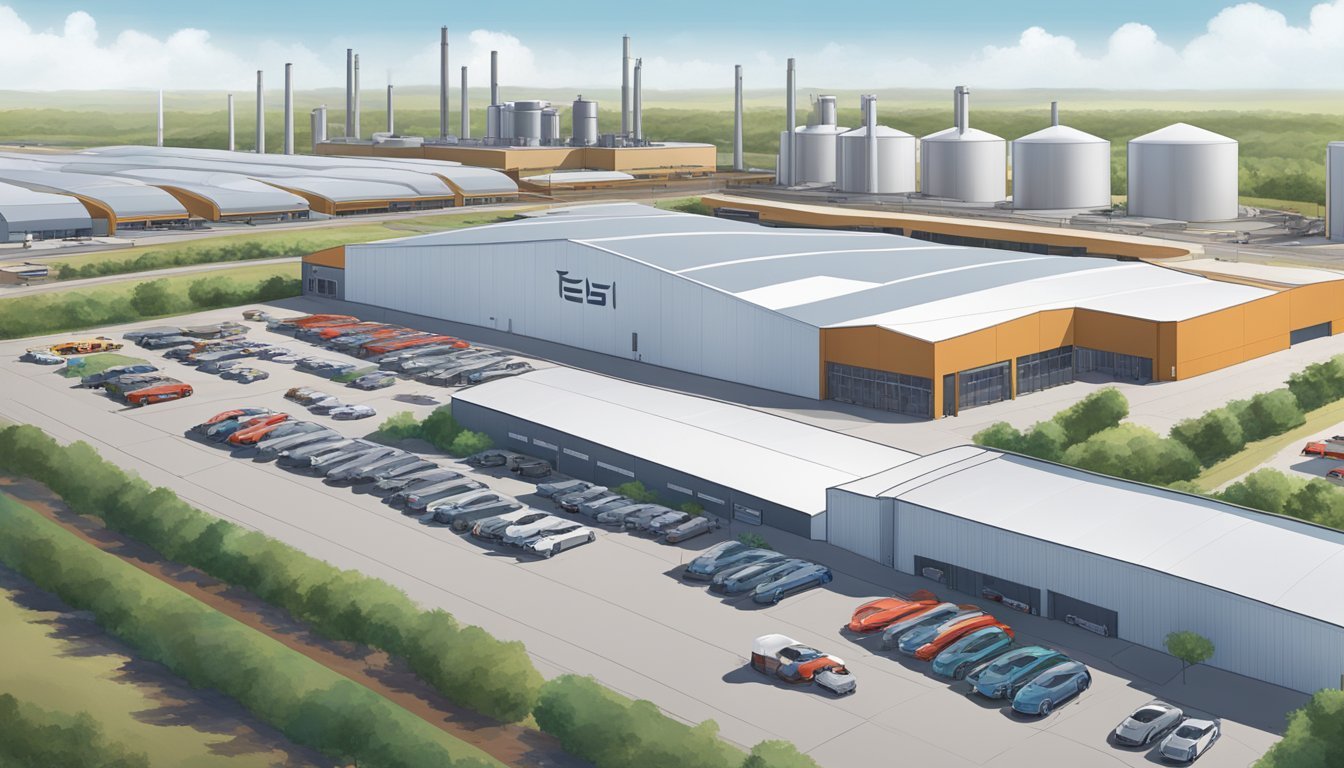Tesla Leaving Austin? Here's the Truth Behind the Rumors!
Recent rumors about Tesla leaving Austin have sparked speculation and concern. However, these claims appear to be unfounded. Tesla's headquarters remain firmly established in Travis County, Texas, with no current plans to relocate.
Elon Musk's electric vehicle company moved its headquarters from California to Austin in late 2021. The decision was part of a broader strategy to expand Tesla's operations and take advantage of Texas' business-friendly environment. The company has since invested heavily in its Austin Gigafactory, which produces Model Y vehicles and batteries.
While Tesla recently announced the relocation of its engineering headquarters back to California, this move does not impact the company's primary headquarters in Austin. The engineering shift aims to bring key technical personnel closer to Silicon Valley's talent pool and resources. Despite some layoffs at the Austin factory, Tesla continues to maintain a significant presence in Texas and shows no signs of abandoning its commitment to the Lone Star State.
Background of Tesla's Presence in Austin
Tesla established a major foothold in Austin, Texas with its Gigafactory and corporate headquarters. This expansion marked a significant shift from the company's California roots and positioned Austin as a key hub for Tesla's operations.
Rise of Giga Texas
Tesla broke ground on Gigafactory Texas in July 2020. The massive 2,100-acre facility in Travis County began producing Model Y vehicles in 2022. Giga Texas represents a $1 billion investment and created over 5,000 jobs for the region.
The factory manufactures Tesla's Model Y and Cybertruck. Its strategic location provides easier distribution to East Coast markets. Giga Texas also houses battery cell production and Tesla's corporate offices.
Strategic Significance of Tesla's Austin Expansion
Tesla's move to Austin marked a shift away from its Silicon Valley origins. In late 2021, the company officially relocated its headquarters from Palo Alto, California to Austin. This decision aligned with CEO Elon Musk's own move to Texas.
The Austin expansion offered Tesla several advantages:
Lower operating costs compared to the Bay Area
A more business-friendly regulatory environment
Access to a growing tech talent pool
Proximity to SpaceX's launch site in South Texas
Tesla's presence has boosted Austin's reputation as an emerging tech hub. The company's investment spurred further economic development in the region.
Factors Leading to Tesla's Departure
Tesla's decision to leave California was driven by a combination of economic and regulatory factors. The company sought a more business-friendly environment with lower operating costs and fewer restrictions.
Economic Considerations
Tesla faced rising costs in California, particularly in the San Francisco Bay Area. High real estate prices made expansion expensive. The region's elevated cost of living also impacted employee compensation and recruitment.
Texas offered significant tax incentives to attract Tesla. The state has no corporate or personal income tax, reducing Tesla's tax burden. Austin provided land and infrastructure support for Tesla's new Gigafactory.
The move allowed Tesla to tap into a new talent pool in Texas. The state's growing tech sector and lower cost of living made it easier to attract skilled workers.
Regulatory Environment
California's stringent environmental regulations posed challenges for Tesla's manufacturing operations. The state's complex permitting process slowed expansion efforts.
Senate Bill 2038 in Texas streamlined the approval process for large-scale industrial projects. This legislation made it easier for Tesla to establish and expand its facilities quickly.
California's labor laws were more restrictive than those in Texas. The move gave Tesla greater flexibility in managing its workforce and operations.
Texas offered a more supportive political climate for Tesla's business model. The state's leaders actively courted the company, promising a smoother regulatory path.
Impact on Tesla's Business Operations
Tesla's decision to leave Austin affects its manufacturing capabilities and future vehicle development. The move has implications for production, supply chains, and upcoming models.
Manufacturing and Supply Chain
Tesla's departure from Austin disrupts its manufacturing operations. The company's massive facility
Consequences for the Austin Region
Tesla's departure from Austin's regulations brings significant changes to the city's economic landscape and environmental oversight. The move impacts local employment, tax revenue, and ecological considerations.
Economic and Employment Ramifications
Tesla's de-annexation affects Austin's tax base and job market. The city loses direct tax revenue from the 2,100-acre property, potentially impacting funding for local services and infrastructure projects. Employment dynamics may shift as Tesla gains more autonomy in its operations and hiring practices.
The move could influence other large companies to seek similar arrangements, potentially altering Austin's business landscape. This may lead to increased competition among municipalities to attract and retain major employers, possibly resulting in reduced regulatory oversight and tax incentives for corporations.
Effects on Austin's Ecological and Community Landscape
The de-annexation raises concerns about environmental protection along the Colorado River. Without Austin's oversight, Tesla's operations may impact local ecosystems differently. The company's approach to water usage, pollution control, and habitat preservation will be crucial for maintaining the area's ecological balance.
Community development near the Gigafactory may change. The reduced municipal influence could affect affordable housing initiatives and infrastructure planning in the surrounding area. Local residents may experience altered access to city services or changes in property values due to the shift in jurisdictional boundaries.
Tesla's Corporate Moves and Elon Musk's Vision
Tesla's corporate strategy has involved significant relocations and expansions under Elon Musk's leadership. These moves reflect broader ambitions for the company's growth and integration with Musk's other ventures.
Headquarter Relocation and Management Decisions
Tesla moved its headquarters from Palo Alto, California to Austin, Texas in 2021. This decision came after tensions with California officials over COVID-19 restrictions at Tesla's Fremont factory. The relocation offered tax benefits, as Texas has no state income tax.
In February 2024, Musk announced a new engineering headquarters in California. This move maintains Tesla's presence in the state where it was founded. The company now balances operations between Texas and California.
Tesla's Fremont factory remains a key production site. The Austin Gigafactory adds significant manufacturing capacity in Texas.
Elon Musk's Broader Business Ecosystem
Musk's vision for Tesla extends beyond electric vehicles. He aims to integrate Tesla with his other companies, creating a synergistic business ecosystem. SpaceX, for instance, shares some technology and manufacturing expertise with Tesla.
The CEO's ambitious plans include sustainable energy production and storage. Tesla's solar panel and battery divisions complement its EV business. This diversification strengthens the company's position in the green technology sector.
Musk's leadership style involves rapid decision-making and bold corporate moves. His public statements often drive media attention and investor interest in Tesla's activities.
The Future of Electric Vehicles in Texas
Texas is poised to become a significant player in the electric vehicle (EV) industry. The state's potential as an EV hub and supportive legislation are driving innovation and attracting major manufacturers.
Role of Legislation and Innovation
Texas Senate Bill 2038 has created new opportunities for EV manufacturers. This legislation allows companies like Tesla to de-annex land, potentially reducing costs and streamlining operations. The bill demonstrates Texas's commitment to fostering a business-friendly environment for EV producers.
Innovation in battery technology and manufacturing processes is accelerating in the state. Tesla's Gigafactory in Austin is at the forefront, with plans to produce next-generation EVs and advanced batteries. This focus on cutting-edge technology is attracting other EV-related businesses to Texas.
AI integration in EV production is another area where Texas is making strides. Automated manufacturing systems and smart vehicle features are being developed and implemented in the state's EV facilities.
Texas as a Potential Hub for EVs
Texas is rapidly emerging as a major center for EV production. Tesla's Gigafactory in Austin has a reported capacity to produce 375,000 Model Y SUVs annually. This significant output positions Texas as a key player in the EV market.
The state's strategic location, robust infrastructure, and business-friendly policies are attracting other EV manufacturers and suppliers. This growing ecosystem is creating a network of expertise and resources that could further solidify Texas's position in the industry.
Texas's energy sector is also adapting to support EV growth. The state is investing in charging infrastructure and exploring renewable energy sources to power EV production and usage. This holistic approach is creating a sustainable foundation for the EV industry's future in Texas.
Implications for Tesla Shareholders
Tesla shareholders face significant decisions regarding the company's future. The proposed move to Texas and Elon Musk's compensation package are key issues requiring their attention.
Shareholders will vote on relocating Tesla's state of incorporation from Delaware to Texas. This change could impact corporate governance and legal protections for investors.
The $56 billion pay package for Musk is another critical matter. Shareholders must weigh the potential benefits of incentivizing Musk against the substantial cost to the company.
Tesla's stock performance is an important consideration. The share price has declined 29% over the past year, affecting shareholder value.
Investors should evaluate how these decisions may influence Tesla's long-term strategy and financial performance. The outcomes of shareholder votes could shape the company's direction for years to come.
Attendance at shareholder meetings, particularly in Austin, Texas, may become more important. These gatherings provide opportunities for investors to directly engage with Tesla leadership and voice their opinions.
Shareholders should stay informed about Tesla's plans and carefully consider how their votes may impact their investments. The company's future trajectory depends on these crucial decisions.
Potential Repurposing of the Giga Texas Facility
Tesla's Giga Texas, a massive manufacturing facility, could be adapted for various purposes if the electric carmaker opts to leave Austin. The plant's advanced production lines and infrastructure present opportunities for repurposing.
One possibility is conversion into a multi-brand automotive production hub. Other electric vehicle manufacturers might leverage the existing setup to accelerate their production capabilities.
Alternatively, the facility could be transformed into a technology and innovation center. Its vast space and cutting-edge equipment could support research and development across various industries.
The site might also be repurposed for renewable energy production. Solar panel or battery manufacturing could utilize the available resources and skilled workforce.
Logistics companies could potentially convert the space into a large-scale distribution center, taking advantage of its strategic location and existing transportation links.
Another option is repurposing for aerospace manufacturing. The facility's size and advanced machinery could be adapted for producing aircraft components or even spacecraft parts.
Regardless of its future use, the Giga Texas facility represents a significant asset with potential for diverse industrial applications beyond its current role in Tesla's operations.
Tesla's Impact on the Auto Industry's Transition
Tesla has catalyzed a fundamental shift in the automotive landscape, pushing established manufacturers to embrace electric vehicles and sustainable practices. The company's influence extends beyond its own product lineup, reshaping competitive dynamics and environmental priorities across the industry.
Evolving Competitive Dynamics
Tesla's success has forced traditional automakers to accelerate their electric vehicle (EV) programs. Many companies have announced ambitious EV targets and increased R&D budgets for electrification. This shift has led to new partnerships and alliances within the industry.
Startups focused on EVs have also emerged, further intensifying competition. Tesla's direct-to-consumer sales model has challenged conventional dealership networks, prompting other manufacturers to reconsider their distribution strategies.
The company's focus on software and over-the-air updates has set new standards for vehicle connectivity and user experience. This approach has compelled competitors to invest heavily in digital capabilities and in-car technology.
Sustainability and Environmental Priorities
Tesla's mission to accelerate the world's transition to sustainable energy has elevated environmental concerns in the auto industry. The company's emphasis on zero-emission vehicles has influenced public perception and regulatory policies.
Many governments have introduced stricter emissions standards and incentives for EV adoption, partly in response to Tesla's market success. This regulatory shift has prompted automakers to prioritize the development of cleaner technologies.
Tesla's integrated approach to sustainable energy, including solar power and energy storage solutions, has inspired other companies to explore similar holistic strategies. The focus on battery technology has spurred industry-wide research into improving energy density and reducing costs.
The company's impact extends to manufacturing processes, with its Gigafactories setting new benchmarks for large-scale, sustainable production facilities. This has led other automakers to reevaluate their own manufacturing practices and supply chains.
Conclusion
Tesla's move to shed Austin's environmental oversight marks a significant shift in the company's relationship with local regulations. This decision stems from a new Texas state law allowing the automaker to leave Austin's extraterritorial jurisdiction.
The change raises concerns about environmental impacts at Tesla's massive manufacturing facility near Austin. It removes the city's ability to enforce local environmental rules on at least part of the factory site.
Tesla's choice reflects ongoing tensions between the company and regulatory bodies. The automaker has a history of challenging traditional industry norms and government oversight.
Despite this development, Tesla maintains a strong presence in Austin. The city remains home to the company's headquarters, which relocated from California in 2021.
This move aligns with CEO Elon Musk's strategy of seeking locations with fewer regulatory hurdles. It may signal similar actions by Tesla in other jurisdictions where it operates.
The long-term effects on Austin's environment and Tesla's operations remain to be seen. This situation highlights the complex interplay between corporate interests, local governance, and environmental stewardship in the rapidly evolving electric vehicle industry.











